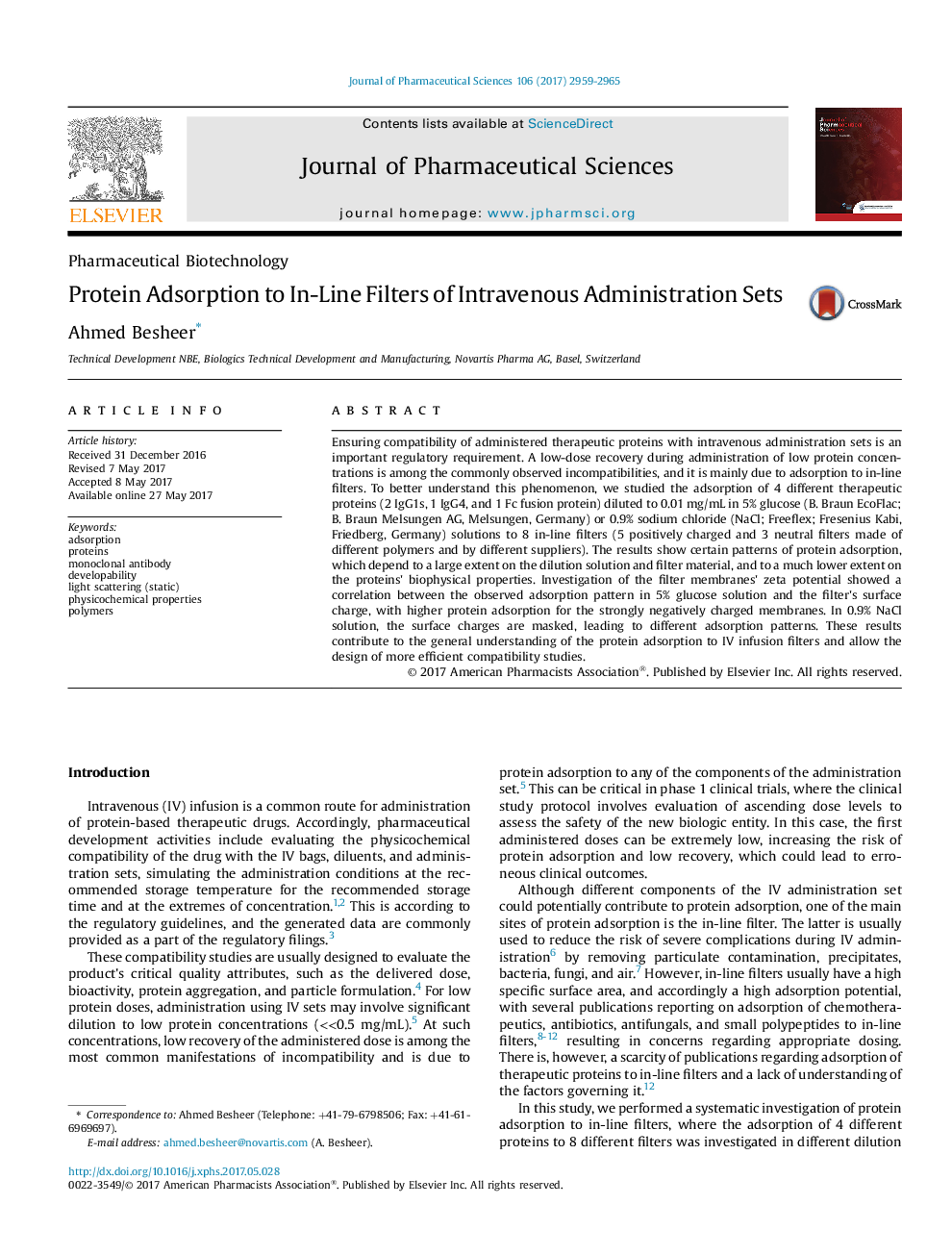| Article ID | Journal | Published Year | Pages | File Type |
|---|---|---|---|---|
| 8513764 | Journal of Pharmaceutical Sciences | 2017 | 7 Pages |
Abstract
Ensuring compatibility of administered therapeutic proteins with intravenous administration sets is an important regulatory requirement. A low-dose recovery during administration of low protein concentrations is among the commonly observed incompatibilities, and it is mainly due to adsorption to in-line filters. To better understand this phenomenon, we studied the adsorption of 4 different therapeutic proteins (2 IgG1s, 1 IgG4, and 1 Fc fusion protein) diluted to 0.01 mg/mL in 5% glucose (B. Braun EcoFlac; B. Braun Melsungen AG, Melsungen, Germany) or 0.9% sodium chloride (NaCl; Freeflex; Fresenius Kabi, Friedberg, Germany) solutions to 8 in-line filters (5 positively charged and 3 neutral filters made of different polymers and by different suppliers). The results show certain patterns of protein adsorption, which depend to a large extent on the dilution solution and filter material, and to a much lower extent on the proteins' biophysical properties. Investigation of the filter membranes' zeta potential showed a correlation between the observed adsorption pattern in 5% glucose solution and the filter's surface charge, with higher protein adsorption for the strongly negatively charged membranes. In 0.9% NaCl solution, the surface charges are masked, leading to different adsorption patterns. These results contribute to the general understanding of the protein adsorption to IV infusion filters and allow the design of more efficient compatibility studies.
Keywords
Related Topics
Health Sciences
Pharmacology, Toxicology and Pharmaceutical Science
Drug Discovery
Authors
Ahmed Besheer,
